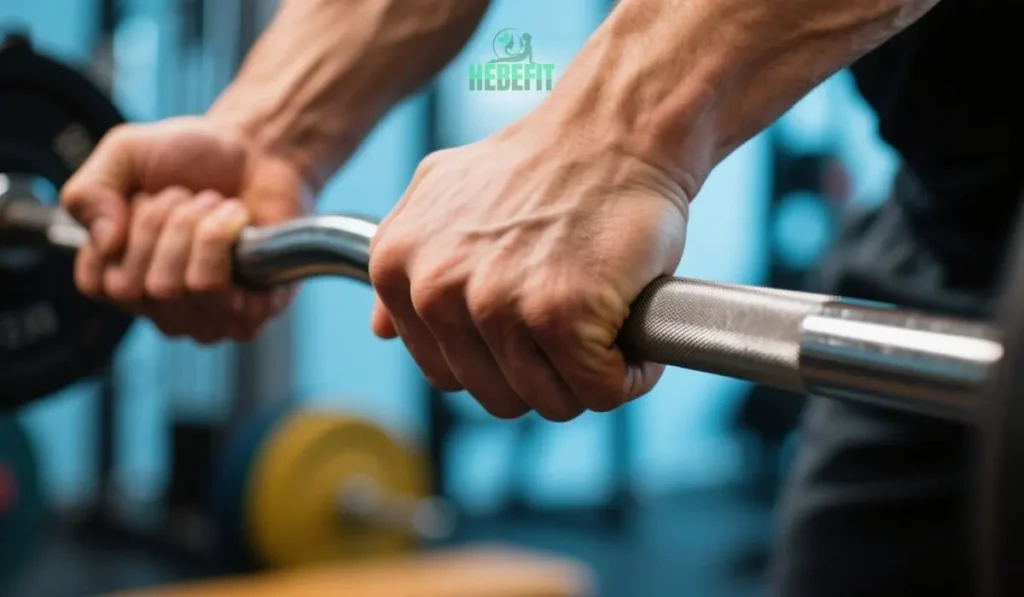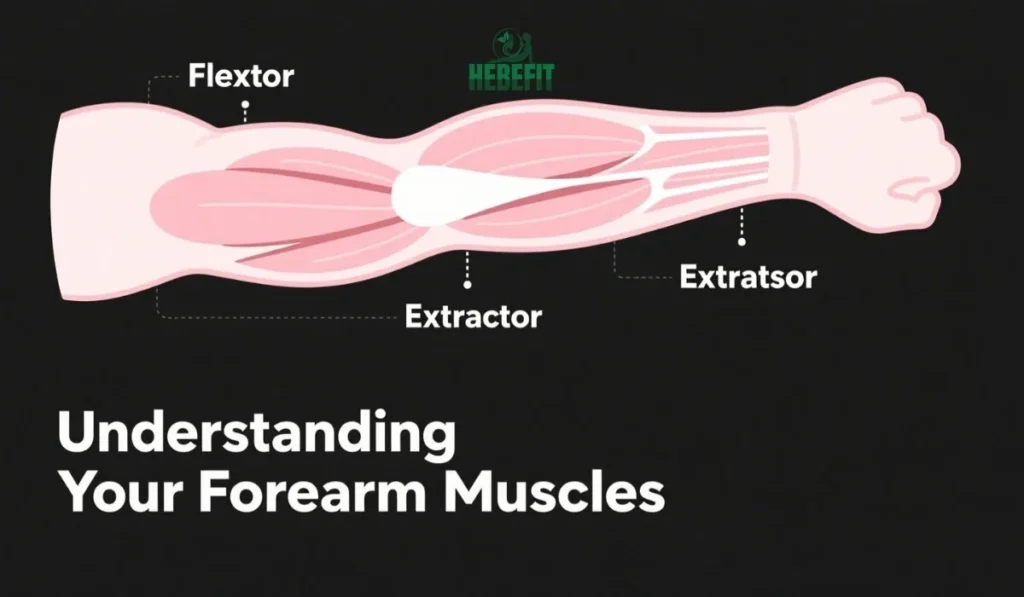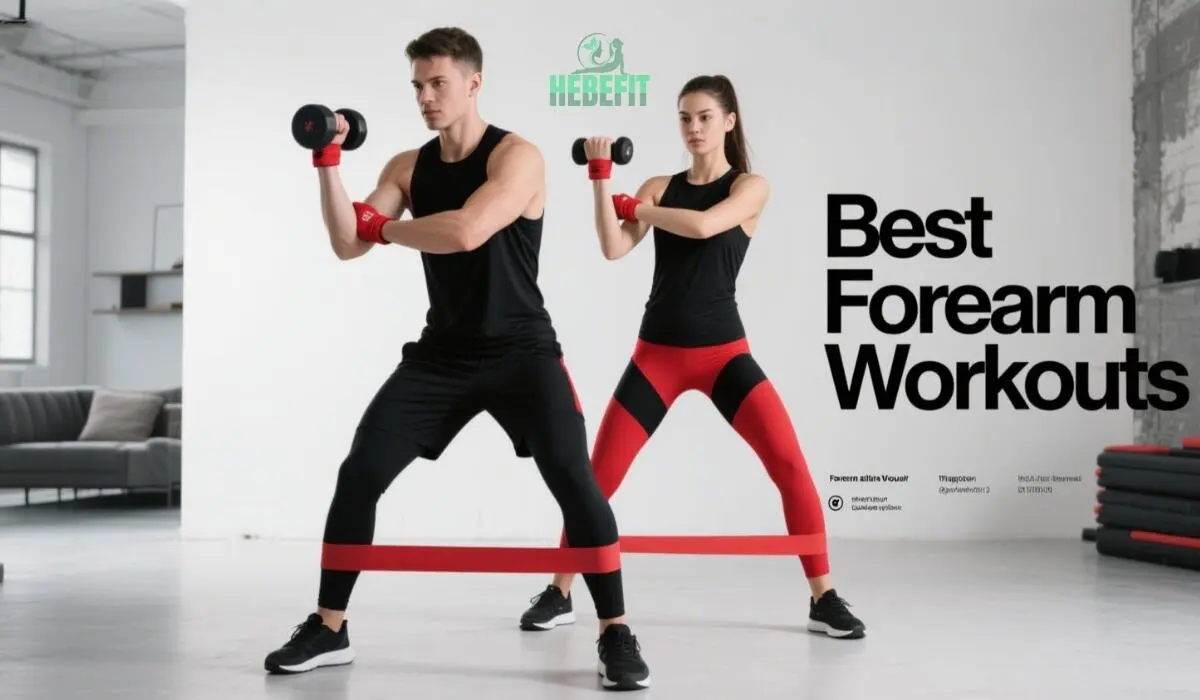Hello, amazing reader! Are you ready to discover some of the best forearm workouts that can truly transform your grip and arm strength? If you’ve ever wondered how to build those often-neglected muscles or if you’re just starting your fitness journey and looking for effective exercise, you’re in exactly the place. We believe that understanding the best forearm workouts is a game-changer, not just for aesthetics, but for functional strength that you use every single day. This guide is designed to be your friendly companion, breaking down the best forearm workouts into easy-to-understand steps. Let’s embark on this journey to stronger forearms together, making it an enjoyable and rewarding experience!

Why Do We Even Need to Know About the Best Forearm Workouts?
That’s a fantastic question to start with! It’s easy to focus on bigger muscle groups like the chest, back, or legs, but your forearms. They’re the unsung heroes of your upper body strength. Knowing about the best forearm workouts is crucial for several reasons:
- Enhanced Grip Strength: This is perhaps the most significant benefit. From carrying groceries and opening jars to holding onto a pull-up bar or lifting heavy weights in other exercises (think deadlifts or rows), a strong grip is fundamental. Weak forearms can be a limiting factor in your overall strength progress.
- Improved Performance in Sports: Many sports rely heavily on forearm and grip strength – think tennis, golf, rock climbing, baseball, and martial arts. The best forearm workouts can give you a competitive edge.
- Injury Prevention: Stronger forearm muscles help stabilize the wrist and elbow joints. This can reduce the risk of common injuries like tennis elbow, golfer’s elbow, or general wrist sprains, especially if you engage in repetitive motions at work or during hobbies.
- Balanced Physique and Aesthetics: For those interested in bodybuilding or achieving a more balanced and well-developed physique, defined forearms contribute significantly to the overall look of your arms.
- Everyday Functional Ease: Beyond specific tasks, strong forearms make countless daily activities easier and less strenuous. You’ll notice the difference in ways you might not even expect!
So, you see, investing time in the best forearm workouts isn’t just about looks; it’s about building a more capable, resilient, and functional body. It’s about empowering yourself!
What Are The Best Forearm Workouts? Unveiling the Top 7 Exercises
Alright, let’s get to the good stuff! When we talk about the best forearm workouts, we’re looking for exercises that target the different muscles in your forearms – primarily the flexors (on the palm side) and extensors (on the top side). Here’s a friendly breakdown of some highly effective options, perfect for beginners and beyond:
Dumbbell-Based Forearm Workouts: Your Go-To Staples
Dumbbells are incredibly versatile and fantastic for isolating forearm muscles.
- Dumbbell Wrist Curls (Palms Up):
- Targets: Forearm flexors.
- Why it’s great: A classic for building mass on the underside of your forearm.
- Dumbbell Reverse Wrist Curls (Palms Down):
- Targets: Forearm extensors.
- Why it’s great: Balances out the wrist curls by working the top of your forearm, crucial for wrist stability.
- Hammer Curls:
- Targets: Brachialis and brachioradialis (muscles in the upper and outer forearm), as well as biceps.
- Why it’s great: While also a bicep exercise, the neutral grip heavily engages the forearms, building thickness.
- Farmer’s Walks:
- Targets: Grip strength, forearms, traps, core, and overall endurance.
- Why it’s great: A functional powerhouse! Simply holding heavy dumbbells and walking builds incredible crushing grip and forearm endurance.
Bodyweight & Minimal Equipment Forearm Workouts: Strength Anywhere
No dumbbells? No problem! You can still get an effective forearm workout.
- Wrist Rotations:
- Targets: Overall forearm mobility and gentle strengthening.
- Why it’s great: Excellent as a warm-up or for active recovery.
- Towel Wring-Outs / Grips:
- Targets: Grip strength and forearm flexors/extensors.
- Why it’s great: Uses a common household item to create resistance.
- Dead Hangs (from a Pull-up Bar):
- Targets: Incredible grip strength, forearm endurance, and shoulder/back decompression.
- Why it’s great: A simple yet profoundly effective exercise. Just hang for as long as you can!
(We’ve counted this as one of the 7 for its overall impact, even if combined with other types of exercises below)
Barbell & Other Equipment Forearm Workouts: Level Up Your Training
If you have access to more equipment, these are also fantastic options making up our top 7:
- Barbell Wrist Curls (Palms Up/Down):(Considered one comprehensive exercise type for this list)
- Targets: Similar to dumbbell versions but allows for potentially heavier loads.
- Plate Pinches:
- Targets: Pinch grip strength.
- Why it’s great: Involves holding two weight plates together smooth-side out, challenging your thumb and finger strength uniquely.
- Wrist Rollers:
- Targets: Forearm flexors and extensors, builds incredible endurance.
- Why it’s great: A specialized tool that provides constant tension as you roll a weight up and down.

How to Do a Step-by-Step Best Forearm Workouts: Your Gentle Guide
Understanding what exercises to do is one thing; knowing how to do them correctly and safely is even more important, especially for beginners. Let’s break down a few of these best forearm workouts step-by-step. Remember to start with light weights or just bodyweight to master the form.
Dumbbell Wrist Curl (Palms Up) Step-by-Step
This is a cornerstone for building those inner forearm muscles.
Starting Position
- Sit on a bench or chair, feet flat on the floor.
- Grab a dumbbell with an underhand grip (palm facing up).
- Rest your forearm on your thigh or the edge of the bench, with your wrist and hand extending just beyond your knee or the bench edge. Your palm should be facing upwards.
- Allow your wrist to bend downwards, letting the dumbbell hang towards the floor, feeling a stretch in your forearm.
Execution
- Slowly curl your wrist upwards, bringing the dumbbell as high as you comfortably can. Focus on using only your forearm muscles – avoid lifting with your bicep.
- Squeeze your forearm muscles at the top of the movement for a second.
- Gently and slowly lower the dumbbell back to the starting position, controlling the movement throughout.
- Repeat for your desired number of repetitions, then switch arms.
Tips for Success
- Keep the movement controlled; no jerky motions.
- Isolate the wrist; don’t let your arm lift off your thigh or the bench.
- Start light! These are smaller muscles.
Dumbbell Reverse Wrist Curl (Palms Down) Step-by-Step
Time to work the top of those forearms!
Starting Position
- Assume the same seated position as the regular wrist curl.
- Grab a dumbbell with an overhand grip (palm facing down).
- Rest your forearm on your thigh or the edge of the bench, with your wrist and hand extending just beyond. Your palm should be facing downwards.
- Allow your wrist to bend downwards, letting the dumbbell hang towards the floor.
Execution
- Slowly extend your wrist upwards, lifting the back of your hand towards the ceiling.
- Squeeze the top of your forearm at the peak of the movement.
- Gently and slowly lower the dumbbell back to the starting position.
- Repeat for your desired number of reps, then switch arms.
Tips for Success
- You’ll likely need a lighter weight for reverse wrist curls compared to regular wrist curls.
- Focus on a full range of motion.
- This exercise is key for balancing forearm development.
Farmer’s Walks Step-by-Step
A wonderfully simple yet challenging exercise.
Starting Position
- Place two heavy dumbbells (or kettlebells, or even heavy shopping bags with a good grip!) on the floor, one on each side of you.
- Stand between them, feet shoulder-width apart.
- Squat down with a straight back and grip the dumbbells tightly.
Execution
- Stand up, keeping your core engaged and back straight.
- Begin walking in a straight line for a set distance (e.g., 20-30 feet) or time (e.g., 30-60 seconds).
- Maintain an upright posture, shoulders back and down. Resist the urge to let the weights pull your shoulders forward.
- Take short, controlled steps.
- Carefully lower the weights back to the ground after completing your distance or time.
Tips for Success
- Focus on maintaining a death grip on the dumbbells throughout.
- Keep your core tight to protect your spine.
- This is as much a mental challenge as a physical one!
Overview of Selected Best Forearm Workouts
| Exercise | Primary Target Muscles | Equipment Needed | Beginner Friendly? |
| Dumbbell Wrist Curl | Forearm Flexors | Dumbbells | Yes |
| Reverse Wrist Curl | Forearm Extensors | Dumbbells | Yes |
| Hammer Curl | Brachioradialis, Biceps | Dumbbells | Yes |
| Farmer’s Walk | Grip, Forearms, Core | Dumbbells/Heavy Obj. | Yes (adjust weight) |
| Dead Hangs | Grip, Forearm Endurance | Pull-up Bar | Yes (modify time) |
| Towel Wring-Outs | Grip, Flexors/Extensors | Towel | Yes |
| Barbell Wrist Curls | Flexors/Extensors | Barbell | Yes (start light) |
| Plate Pinches | Pinch Grip | Weight Plates | Moderate |
| Wrist Roller | Flexors/Extensors | Wrist Roller device | Moderate |
What Are the Benefits of Step-by-Step Best Forearm Workouts?
Following a step-by-step approach to the best forearm workouts offers numerous advantages, ensuring you get the most out of your efforts safely and effectively:
- Mastering Proper Form: Step-by-step instructions help you learn the correct technique from the get-go. Good form is essential for targeting the right muscles and, more importantly, for preventing injuries. This is why we always emphasize quality over quantity.
- Increased Muscle Activation: When you perform an exercise correctly, you ensure that the intended muscles (in this case, your forearms) are doing the work. This leads to better muscle growth and strength gains.
- Enhanced Mind-Muscle Connection: By focusing on each step of the movement, you develop a better feel for how your forearm muscles are working. This mind-muscle connection is crucial for effective training.
- Progressive Overload Made Easier: Once you’ve mastered the form with lighter weights or bodyweight, you can confidently and safely begin to increase the resistance (weight), reps, or sets. This progressive overload is key to continuous improvement.
- Building Confidence: Successfully learning and performing new exercises, especially ones like the best forearm workouts that might seem a bit niche, builds confidence in your abilities and encourages you to explore other areas of fitness. You’ve got this!
- Sustainable Long-Term Results: Learning correctly lays the foundation for a sustainable fitness routine. You’re less likely to get injured or discouraged, making it more likely you’ll stick with it and see those fantastic forearm gains.
It’s truly about a journey of discovery and empowerment, one step at a time.

Sample Beginner Forearm Workout Routine (2-3 Times Per Week)
Remember to warm up before and cool down after! Allow at least one day of rest between forearm workouts.
| Exercise | Sets | Reps | Rest (seconds) |
| Warm-up: Wrist Rotations | 1 | 10-15 each way | N/A |
| Dumbbell Wrist Curls | 2-3 | 10-15 | 60-90 |
| Dumbbell Reverse Wrist Curls | 2-3 | 12-18 | 60-90 |
| Hammer Curls | 2-3 | 8-12 | 60-90 |
| Dead Hangs (or Farmer’s Walk) | 2-3 | As long as poss. (30-60s) | 90 |
| Cool-down: Gentle wrist stretches | 1 | 30s per stretch | N/A |
Start with weights that challenge you but allow you to maintain good form for all reps.
Tips for Maximizing Your Forearm Training Journey
As you incorporate these best forearm workouts into your routine, keep these friendly tips in mind:
- Consistency is Your Best Friend: Like any fitness goal, consistency is key. Aim to train your forearms 2-3 times a week for noticeable results.
- Form Over Ego: Always prioritize correct form over lifting heavy weight. This will prevent injuries and ensure you’re actually working the target muscles.
- Listen to Your Body: Forearm muscles are smaller and can fatigue. If you feel pain (not just muscle burn), stop and rest. Don’t push through sharp pain.
- Embrace Progressive Overload: As you get stronger, gradually increase the weight, reps, sets, or decrease rest time to continue challenging your muscles.
- Warm-Up and Cool-Down: Prepare your wrists and forearms with light movements before starting, and stretch them gently afterwards.
- Don’t Forget Nutrition and Hydration: Fueling your body properly and staying hydrated supports muscle recovery and growth. If you’re curious about how nutrition supports muscle growth, we have some great articles on our blog you might find helpful!
Connecting Forearms to Your Overall Fitness Goals
Strong forearms aren’t just an isolated achievement; they play a vital supportive role in your broader fitness pursuits.
- Boosting Compound Lifts: Think about exercises like deadlifts, rows, pull-ups, and even bench presses. Your ability to hold onto the bar securely is often limited by your grip strength. By incorporating the best forearm workouts, you’ll find you can handle more weight or perform more reps in these crucial compound movements. If you’re looking to perfect your deadlift, stronger forearms are a secret weapon – check out our guide on deadlift form for more tips!
- Enhancing Sport-Specific Performance: As mentioned earlier, sports from tennis to climbing demand strong hands and forearms. Improving this area can directly translate to better performance and endurance in your chosen activities. Are you a budding rock climber? You’ll find our core strength exercises complement forearm training perfectly for those tough routes!
- Everyday Life Improvements: Beyond the gym, you’ll notice the difference. Carrying heavy items, yard work, playing with your kids – it all becomes a bit easier with a stronger grip.
By viewing forearm training as an integral part of your overall fitness, you unlock a new level of capability.
Final Thoughts: Your Journey to Stronger Forearms Starts Now!
Well, there you have it – a friendly guide to the best forearm workouts, designed especially with beginners in mind, but with tips that everyone can use. Remember, the journey to stronger forearms is a marathon, not a sprint. Be patient with yourself, celebrate the small victories (like holding that dumbbell a little longer or opening that stubborn jar with ease!), and most importantly, enjoy the process of becoming stronger and more capable.
We hope this guide has made the world of forearm training feel accessible, understandable, and even a little exciting. You have the knowledge and the tools – now it’s time to gently put them into practice. We’re cheering you on every step of the way!
FAQs: Your Forearm Workout Questions Answered
We’ve gathered some common questions to help you feel even more comfortable and confident as you explore the best forearm workouts.
How often should I do forearm workouts as a beginner?
As a beginner, aim to train your forearms 2-3 times per week. This allows for adequate work and crucial recovery time. Listen to your body; if your forearms are very sore, give them an extra day of rest.
Can I do forearm workouts every day?
It’s generally not recommended to train any muscle group, including forearms, every single day, especially with intensity. Muscles need time to recover and grow. Overtraining can lead to injury or stalled progress. Stick to 2-3 dedicated sessions per week.
What’s more important for forearm growth: weight or reps?
Both play a role! For hypertrophy (muscle growth), a common approach is moderate weight for 8-15 reps. For endurance, lighter weight for higher reps (15-25+) can be effective. The most important thing is progressive overload – gradually challenging your muscles more over time, whether through increased weight, reps, or sets, while maintaining good form.
Will forearm workouts make my wrists bigger?
Forearm workouts primarily build the muscles in your forearms (the area between your wrist and elbow), not the wrist joint itself. While your forearms will get larger and more defined, the actual bone structure of your wrist won’t change. This can create the illusion of thicker wrists due to the increased muscle mass surrounding them.
Do I need special equipment for the best forearm workouts?
Not necessarily! While dumbbells, barbells, and wrist rollers are effective, you can get a great forearm workout with minimal or no equipment. Exercises like dead hangs (using a pull-up bar or even a sturdy tree branch), towel wring-outs, and bodyweight wrist extensions/flexions can be very effective, especially for beginners.
How long will it take to see results from forearm workouts?
Results vary depending on consistency, diet, genetics, and training intensity. However, with consistent effort (2-3 times per week), you might start noticing an increase in grip strength within a few weeks. Visible muscle growth typically takes a bit longer, perhaps 4-8 weeks or more. Be patient and stay consistent!
Can women benefit from doing the best forearm workouts?
Absolutely! Strong forearms are beneficial for everyone, regardless of gender. Women can gain significant functional strength, improve grip for daily tasks and other exercises, and develop toned, defined forearms without becoming ‘bulky’ (as muscle growth is also influenced by hormonal factors which differ between sexes).
My forearms get tired quickly during other exercises like bicep curls or rows. Will these workouts help?
Yes, definitely! If your forearms are fatiguing before the target muscles in other lifts, it’s a clear sign that your grip strength is a limiting factor. Incorporating dedicated forearm workouts will strengthen your grip and forearm endurance, allowing you to better target the intended muscles in exercises like curls, rows, and deadlifts.










